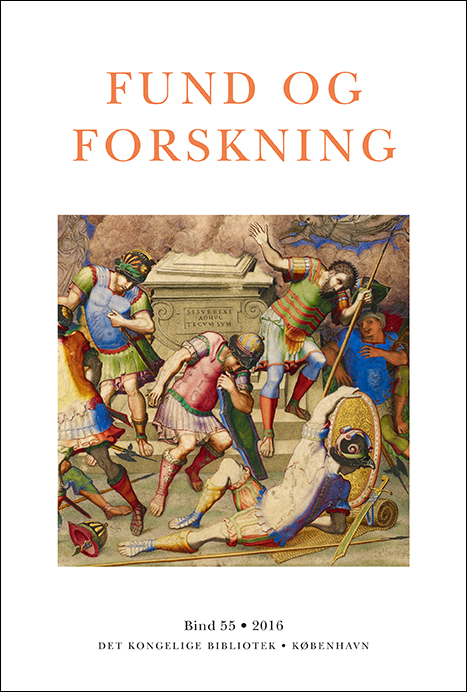Skrevet på papir og skind. Mesoamerikanske manuskripter fra præcolumbiansk tid til kolonitiden
DOI:
https://doi.org/10.7146/fof.v55i0.118910Abstract
Jesper Nielsen, Christophe Helmke & Maja Balle: Written on Paper and Hides: Mesoamerican Manuscripts from Pre-Columbian to Colonial Times
A series of important Pre-Columbian civilizations thrived in the culture area known as Mesoamerica. Among these were the Olmec, Maya, Mixtec and Aztec, literate cultures of different language families. Mesoamerica is one of the very few hearths of literacy in the ancient world, since it is here that writing was invented in the New World, independently of the development of writing in the Old World, as seen in Egypt and Mesopotamia, the Indus Valley and China. Whereas the earliest ancestral writing system of Mesoamerica remains elusive it eventually gave rise to as many as ten different writing systems, of which only that of the Maya and the Aztec have succumbed to phonetic decipherment. This contribution provides a thorough overview of Mesoamerican literature, as represented in the manuscripts that subsist to the present day. As such we do not review the written records inscribed on stone monuments or portable objects and items of regalia, nor the texts painted on murals. Instead, focus is placed on the manuscripts that represent Pre-Columbian literary traditions, both in terms of format, as well as the coupling of images and texts, written in one or another Native American writing system. All of these manuscripts were produced by Native American scribes in the decades preceding and following the Spanish Conquest, although some manuscripts exhibit some degree of European influence and the beginnings of a hybrid Indo-Christian style. We present a background on books and scribes, as well as Mesoamerican writing systems as these are understood today. From there we review the three salient areas of manuscript production in Mesoamerica, namely, the Aztec tradition of central Mexico, the intervening tradition spanning from Puebla to Oaxaca, describing in detail the Mixtec mapa from the town of Xochitepec which is part of the Danish National Museum’s collection, and finally, the Maya tradition in the east. To close we take a look at the continued production and utilisation of Mesoamerican manuscripts, not only for the illicit art market, but also among traditional communities, where manuscripts are still integrated into ritual life and where traces of the Pre-Columbian scribal arts subsist to this day.


